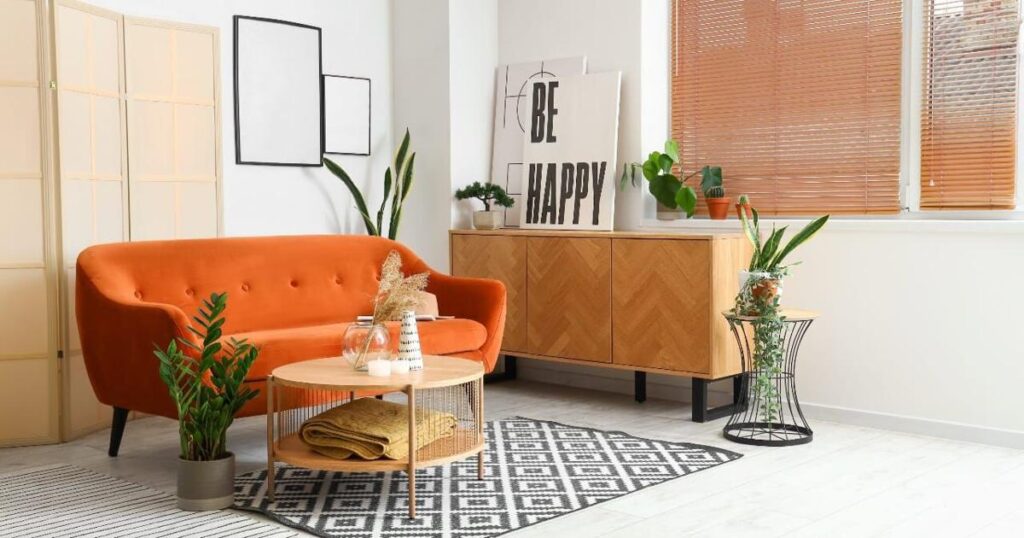Times are changing. Nearly two-thirds of shoppers now buy the majority of their furniture online rather than in-store. This is according to the 2024 3D Cloud Furniture Shopping Trends Study by Provoke Insight.
Only 17% rely solely on the in-store experience. 16% never leave the house.
The future is more than two-dimensional. 3D modeling is revolutionizing online shopping. The digital landscape of the furniture market is booming, with revenues increasing for six consecutive years. But experts say the best approach is to combine physical and digital storefronts with integrated and adaptable technology and 3D tools.
The introduction of 3D tools will benefit both consumers and retailers, allowing shoppers to visualize how furniture and décor will fit into their homes.
Why people buy furniture online
Even before the coronavirus pandemic forced us indoors, many people preferred online shopping for its convenience. Makes it easy to compare similar options and prices from multiple retailers. One in five visit a store first and then look for bargains online. Most purchases made in the store are by men, regardless of age.
That doesn’t mean they aren’t willing to change the way they shop. In fact, research shows that 52% of these men are interested in 3D planners. 28% of online purchases already use a 3D planner, including many buyers and sellers on Amazon. Seamless, immersive shopping means less effort for shoppers and potentially more sales for retailers.
Purchasing new furniture in a brick-and-mortar store has several benefits. By touching the fabric and seeing the colors, you can purchase with confidence. Devy Dar, owner of Drizzling Flavor, comments on the multidimensional shopping experience. “I love 3D shopping tools. They were especially helpful when I remodeled my kitchen last year.”
“I thought it was great to be able to see 3D images of all the appliances and gadgets in my new kitchen design. Also, the technology is so advanced and user-friendly that even a tech novice like me could easily navigate it. I can use it. I love the new kitchen. It looks exactly like the one I designed.”
It seems like a natural follow-up to researching furniture online and then going to the store to see what buyers’ top choices are. But with accurate 3D floor planning and textile samples, online shopping becomes worry-free, saving you time and resources.
Simplify online shopping for home furniture
One of the biggest drivers of online furniture shopping is convenience. In the past, it was difficult to visualize how decorations would fit into your home’s space, even with precise measurements. Modern technologies such as 3D modeling are improving shopping and making online a more viable option.
More intuitive tools help you make better decisions about big-ticket investments and are less likely to waste your money. Viewing works in your own physical space through 3D augmented reality goes beyond what you can do even in a physical location.
There is still some uncertainty about the actual fabric color and texture and usually requires physical shopping. Fully comprehensive 3D shopping tools may one day solve this problem, but touch remains an important factor for many buyers.
While companies still need to solve the need for tactile details with fabric samples, perhaps by offering a mail-order system, retailers like Wayfair are offering tools to visualize furniture in 3D space. are.
Many people have a hard time imagining what a room would look like with invisible imaginary furniture. Even people who are familiar with the layout of the room can get the big picture. A good 3D room planner will simulate lighting under artificial light throughout the day to help shoppers understand the color range. You can see how the room will flow based on your desired layout, eliminating headaches and guesswork when imagining the final arrangement.
Extend the 3D experience to physical stores
Improved 3D rendering is already having a big impact. “We’ve seen it firsthand. Retailers who embrace 3D visualization technology are redefining the customer experience and gaining ground in competitive environments,” said Beck Besecker, CEO and co-founder of 3D Cloud by Marxent. “We are poised to take advantage.”
Combining tactile information with the need for visual aids will transform online shopping for furniture. But how do you translate that technology into a viable physical shopping experience? Programs like this can attract high-spending customers who can embark on a one-stop shopping trip to furnish their entire home. may attract.
If a customer walks into your store with a photo of their living room, office, or bedroom on their phone, can you use that photo to render a 3D space and create a model of your furniture? This has not yet been implemented. It’s not a new tool, but it’s a tool that could ultimately change the way consumers buy furniture. Seeing your aesthetic come to life increases your ability to create spaces that fit your specific personality.
3D shopping considerations
3D technology has the potential to revolutionize the way people shop for home decor, but retailers and consumers need to consider the challenges and limitations. By addressing these issues and finding ways to make 3D tools more accessible and user-friendly, online and brick-and-mortar retailers can create a more engaging and personalized shopping experience for their customers. .
Some consumers may not have devices that support the latest 3D technology. Over-reliance on these tools limits their accessibility and impact. Some consumers may not be able to experience 3D shopping at home if they have a stable internet connection.
Overly complex tools can prevent more users from learning how to use the tool easily, unless an over-the-counter physical alternative has substantially the same functionality. 3D environments continue to grow in the home furnishings industry, but there is still a lot of progress left to make in creating a fully intuitive shopping experience.



